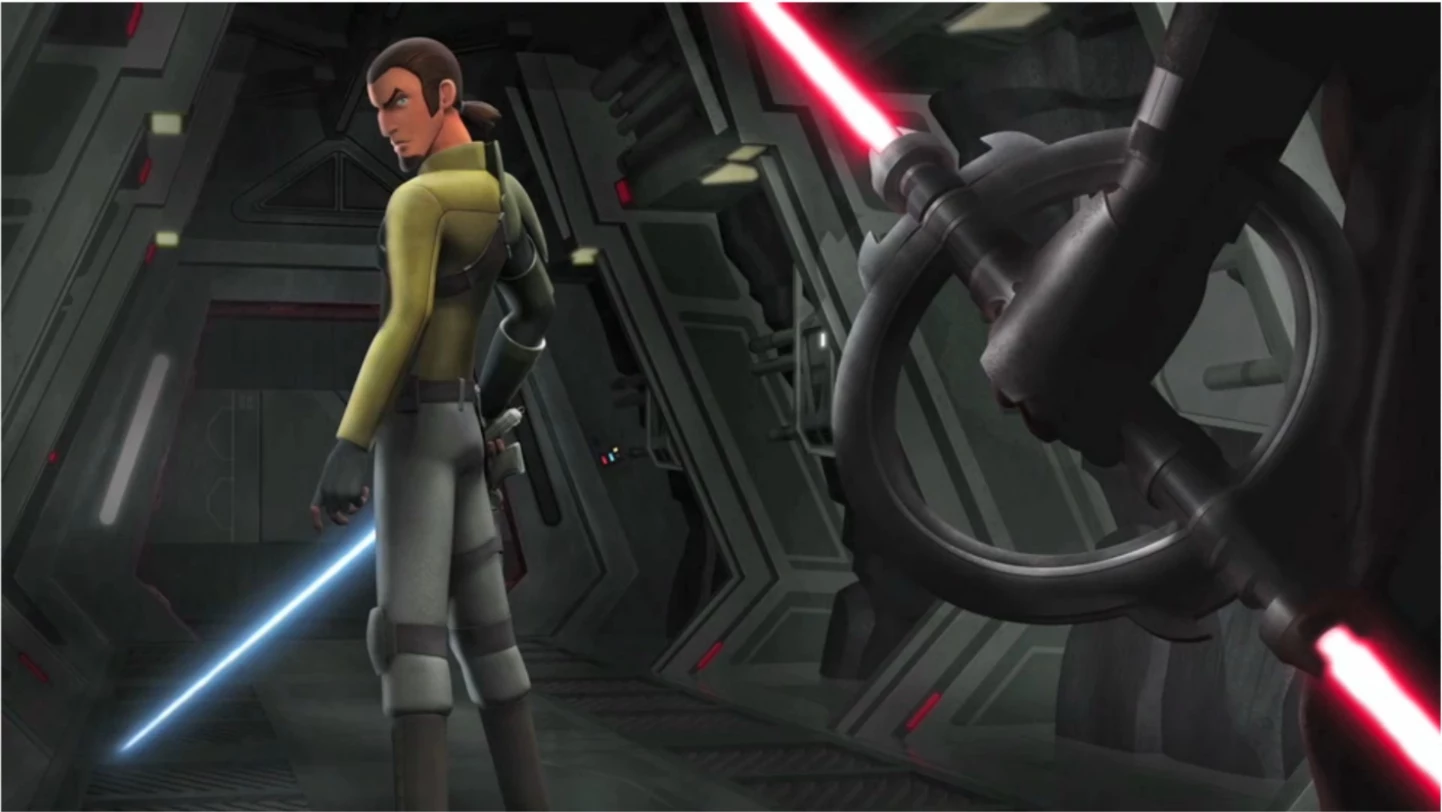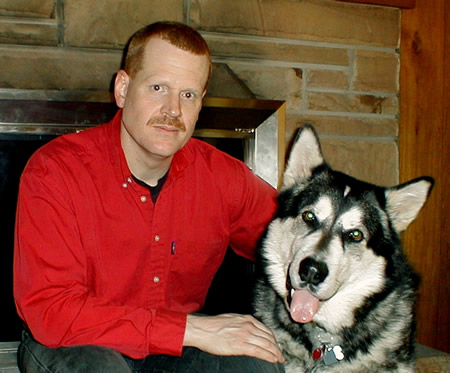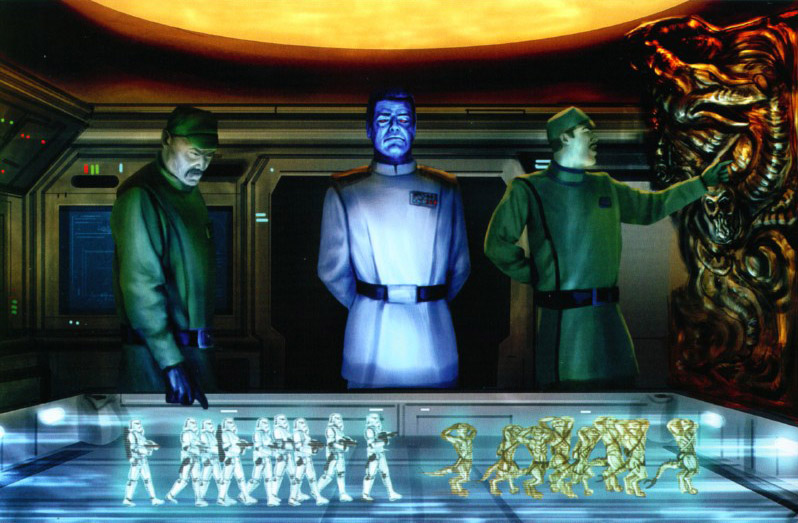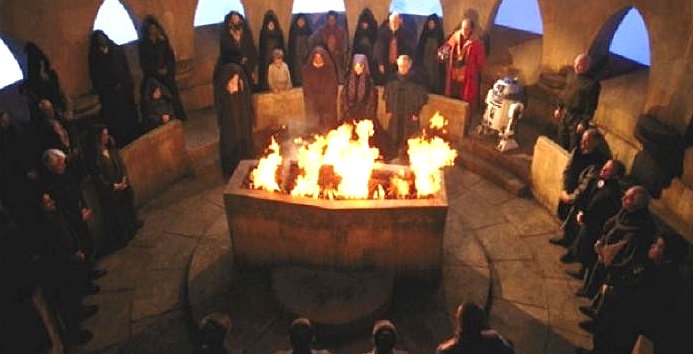 As we all know, Lucasfilm Animation is going to be releasing a new cartoon, Star Wars Rebels. It has a lot going for it, even to someone who mostly avoided The Clone Wars– a diverse cast, an exciting time frame to play with, and the lessons of TCW to build off of. However, there is an element that gives me cause for concern. The protagonist, Kanan, is a Jedi who survived Order 66 and is training an apprentice in the ways of the Force. Couple this with the title- Rebels– and the setting- circa 5 BBY or so- and there’s a decent chance that this show will depict the founding of the Alliance to Restore the Republic. And likely as not, in such a scenario, the show’s Jedi protagonist will play some role in that founding. I’m not a fan of Jedi being heavily involved with the Rebellion at all, particularly in founding and leading it.
As we all know, Lucasfilm Animation is going to be releasing a new cartoon, Star Wars Rebels. It has a lot going for it, even to someone who mostly avoided The Clone Wars– a diverse cast, an exciting time frame to play with, and the lessons of TCW to build off of. However, there is an element that gives me cause for concern. The protagonist, Kanan, is a Jedi who survived Order 66 and is training an apprentice in the ways of the Force. Couple this with the title- Rebels– and the setting- circa 5 BBY or so- and there’s a decent chance that this show will depict the founding of the Alliance to Restore the Republic. And likely as not, in such a scenario, the show’s Jedi protagonist will play some role in that founding. I’m not a fan of Jedi being heavily involved with the Rebellion at all, particularly in founding and leading it.
Read More
Category: This Belongs in a Museum
Everything is Interconnected and Interdependent: KOTOR II and the Religions of India
In Knights of the Old Republic II, a motif of echoes and vibrations is woven throughout the narrative, particularly with regard to the Force, and to the actions of an individual. Many of the characters, from the fallen Jedi Kreia to the adorably psychotic assassin droid HK-47 voice notice of how the actions of an individual, a group, or something more metaphysical can create a cascade of after-effects- ‘echoes’, or ‘resonance’, as they are termed in the game.
HK-47 comments upon how, by mistranslating a single word, an interstellar war between several insectoid species was instigated, and through this war the Republic was able to gain influence over an entire sector, shoring up the rapidly failing galactic government. Visas Marr, in her first scene with Darth Nihilus, mentions that she can “hear” the echoes of the Exile’s actions against the background noise of life in the universe. Kreia draws the Exile’s attention to the background hum of the Force itself on Nar Shaddaa, by listening with her heart- a method the Exile later uses to open the bounty hunter Mira to the Force. Many of Kreia’s lessons utilize the imagery of echoes and resonance to teach the Exile about the long-term, often unintended consequences of actions and ideas. Indeed, Kreia’s ultimate goal is to murder the Force itself through some complex utilization of echoes- to create an echo that would drown out the Force itself, to at last break its seemingly fickle will.
Escape Pod: Matthew Stover
 There are few Star Wars authors (none, actually) more universally revered than Matthew Stover, the author of Traitor, Revenge of the Sith, Shatterpoint, and Luke Skywalker and the Shadows of Mindor. Stover writes his novels with moving prose, fantastic characterization, snappy dialogue, and generally an inspiring passion for the Star Wars universe. Some of the most memorable entries in the Star Wars Expanded Universe are the product of Matthew Stover, and Disney would be making a grievous mistake in not inviting him to play a role in any sort of EU 2.0. Throughout his involvement with the Galaxy Far, Far Away, Stover has demonstrated a fantastic capacity for utilizing the Star Wars setting to its utmost potential, and for crafting stories that inspire the fandom.
There are few Star Wars authors (none, actually) more universally revered than Matthew Stover, the author of Traitor, Revenge of the Sith, Shatterpoint, and Luke Skywalker and the Shadows of Mindor. Stover writes his novels with moving prose, fantastic characterization, snappy dialogue, and generally an inspiring passion for the Star Wars universe. Some of the most memorable entries in the Star Wars Expanded Universe are the product of Matthew Stover, and Disney would be making a grievous mistake in not inviting him to play a role in any sort of EU 2.0. Throughout his involvement with the Galaxy Far, Far Away, Stover has demonstrated a fantastic capacity for utilizing the Star Wars setting to its utmost potential, and for crafting stories that inspire the fandom.
Find a Way or Make One: Thrawn, Star Wars, and History


Grand Admiral Thrawn, of Timothy Zahn’s Heir to the Empire trilogy, was one of the most brilliant opponents ever faced by the New Republic. He outmaneuvered the heroes deftly, often defying impossible odds to accomplish stunning victories over the heroes. At the time of his death, Grand Admiral Thrawn had the New Republic on its knees. In a letter to a fan, Zahn described the blue menace as a composite of several figures: the fictional detective Sherlock Holmes, as well as several historical military figures: Hannibal Barca, Robert E. Lee, and Erwin Rommel, among others. Thrawn’s deductive abilities are almost certainly drawn from Conan Doyle’s famous detective, Sherlock Holmes. Holmes is able to assemble an accurate picture of how a crime occurred through deductive abilities, impeccable observation skills, and the aid of his trusty compatriot Dr. James Watson, who serves as the narrator in the Holmes stories. One of Thrawn’s signature traits is his ability to deduce his opponents’ actions before they even begin said actions, through a thorough understanding of psychology, an encyclopedic knowledge of military tactics, and the understanding of alien mindsets through the study of alien art. He even has his own Watson, in the form of Captain Gilad Pellaeon, captain of the Star Destroyer Chimaera and later Grand Admiral of the Imperial Remnant.
Read More
Luminous Beings Are We: Bodhisattvas and Force Ghosts

In my article on Vergere and Daoism, I discussed the concept of Li lines- the concept of following the natural path of one’s life, acting the role that one was born to play. From a Daoist perspective, free will exists, yet defiance of one’s Li line is seen as unnatural. Most pertinently to this discussion, the natural termination of a Li line occurs at death- indeed, the manner of one’s death may be an integral part of that Li line- as Ganner Rhysode so brilliantly demonstrated at the Well of the World Brain. If denying one’s Li line is unnatural, then it follows that defying the end of the line is similarly unnatural. The Jedi Path, which was written in the style of an in-universe Jedi text, explicitly describes death as the end of a Jedi’s life, when he or she is subsumed into the netherworld of the Force. In short, Jedi orthodoxy in the Rise of the Empire era viewed death as the end. Sith experiments to extend one’s life or cheat death were reviled by the Jedi- not just for the horrific means by which the Sith attempted these experiments, but also the selfishness it entailed. During this period prior to the Prequels, the Jedi Order by and large regarded tales of Whill Shamans being able to retain their identities after death as little more than fairy tales- at best “as metaphors for the Jedi Code’s final precept”.

However, the Jedi do not draw solely upon Daoist philosophy and theology. In designing and elaborating upon the Jedi, George Lucas and the rest of the writers who have contributed to Star Wars have drawn upon various Eastern religious traditions, including Buddhism. Within Buddhism exists the concept of the bodhisattva. Essentially, a bodhisattva is an individual who has attained enlightenment- achieved nirvana- yet has chosen to remain on earth and help others to achieve enlightenment. In other words, an ambition to become a Buddha, or at least a Buddha-like figure. It is a state of utter compassion for all life, and the product of a desire to help to bring about a better world even when one has found an escape from the cycle of samsara- the eternal cycle of life, death, and rebirth. The various schools of Buddhism recognize differing notions of what being a bodhisattva entails. For example, certain elements of Mahayana Buddhism recognize three distinct paths: king-like bodhisattvas, who become a buddha then guide others to enlightenment; boatman-like bodhisattvas, who wish to become buddhas alongside the rest of humanity; and shepherd-like bodhisattvas, who wish to delay their own enlightenment until the rest of humanity has achieved it. Various Buddhist traditions recognize a variety of bodhisattvas throughout history, ranging from mythical figures and Buddhist kings to semi-historical scholars such as Shantideva. So, where am I going with this discussion of the luminous beings of Buddhism?
In A New Hope, Obi-Wan Kenobi sacrifices himself to give the intrepid protagonists a chance to escape the Death Star. As Vader attempts to establish that he is now, in fact, the master, Obi-Wan’s body disappears, shocking the Sith Lord. He then goes on to provide guidance to Luke (and briefly possess Leia during Splinter of the Mind’s Eye), appearing in the form of a Force Ghost. Just what becoming a Force Ghost entails wasn’t greatly elaborated upon until Matthew Stover penned his legendary novelization of Revenge of the Sith, and subsequent EU works elaborated upon it. Becoming a Force Ghost requires knowledge of a certain technique perfected by Whill shamans- a technique that can be passed on after death. It requires utter compassion for all life, and allows a Jedi to retain their identity after death, appearing as a luminous beingin the mortal world. Force Ghosts do not simply deny death for fun; they remain on the mortal plain in order to provide guidance to those who still dwell in the mortal coil.

In becoming a Force Ghost, a Jedi is making a choice to deny, for a time, his or her own eternal enlightenment, and the peace of death. He or she is choosing to temporarily forego a state of eternal rest and enlightenment in order to remain on the mortal plane and pass on knowledge to those who remain. In short, by becoming a Force Ghost, a Jedi is, on some level, choosing to act as a sort of bodhisattva. The Force Ghost does not easily fit into any of the three paths to bodhisattva-hood mentioned earlier, yet it does dovetail with elements of the first and last paths. To become a Force Ghost requires knowledge of the Whill techniques (which have never really been detailed)- in other words, a Force Ghost must have attained a certain quality of enlightenment. At the same time, a Force Ghost is delaying his or her entry into the netherworld for a time (or taking a vacation from it, in the case of Qui-Gon Jinn)- similar to the shepherd-like bodhisattva, who denies his own nascent buddhahood in order to enlighten the world first.
The specific goals that Force Ghosts have had in mind have varied throughout the canon. Obi-Wan remained on the mortal plane for years to continue to instruct Luke Skywalker, the last hope of the Jedi. Whether it was to provide him with direct information (Zahn has Obi-Wan reveal a keycode to Luke in Allegiance), attempt to provide spiritual guidance to the young Jedi Knight, share military intelligence (warning Luke of the Ssi-Ruuk attack on Bakura), or justify misleading Luke about the true nature of Darth Vader, Obi-Wan was able to guide Luke up until the Thrawn crisis, seeing his pupil as the best hope for a galaxy ravaged by war and the Sith. Anakin Skywalker utilized the technique to seek his daughter’s forgiveness- forgiveness Leia would refuse him for decades. He arguably appeared to his descendant Cade to warn him of the perils of flirting with the dark side, although Cade’s altered state of mind at the time makes this appearance ambiguous. Luke Skywalker remained as a Force Ghost for an unknown duration (given that his death date has never been detailed), and spent much of that time providing advice to Cade Skywalker and urging him to clean up his life, regardless of how little Cade appreciated the help. Indeed, Cade was positively hounded by Skywalker ghosts- Luke, Anakin and Mara (depending on how drugged out Cade was), and Kol Skywalker all appeared to him at various points in his checkered career. Several other Jedi, such as Vergere, Arca Jeth, Qu Rahn, Yoda, and Halagad Ventor transcended their flesh upon death. The common thread between these ghosts is the desire to remain behind after one’s death in order to bring enlightenment, share wisdom, or make amends with those still among the living.

In the end, a bodhisattva will eventually move on. Likewise, sooner or later a Force Ghost must bend to the will of the Force and move on to the great beyond. While they can influence the living, it is those in the mortal world who must make their choices and act upon them. a bodhisattva may guide one along the path of enlightenment, but it is the individual who must actual take those steps to achieve nirvana. Likewise, Luke Skywalker could try to steer Cade away from a path of self-destruction, and Obi-Wan Kenobi could try to warn Luke of the dangers of facing Darth Vader without completing his training, but in the end Cade and Luke had to make their own decisions. As Vergere put it:
“Choose, and act.”

